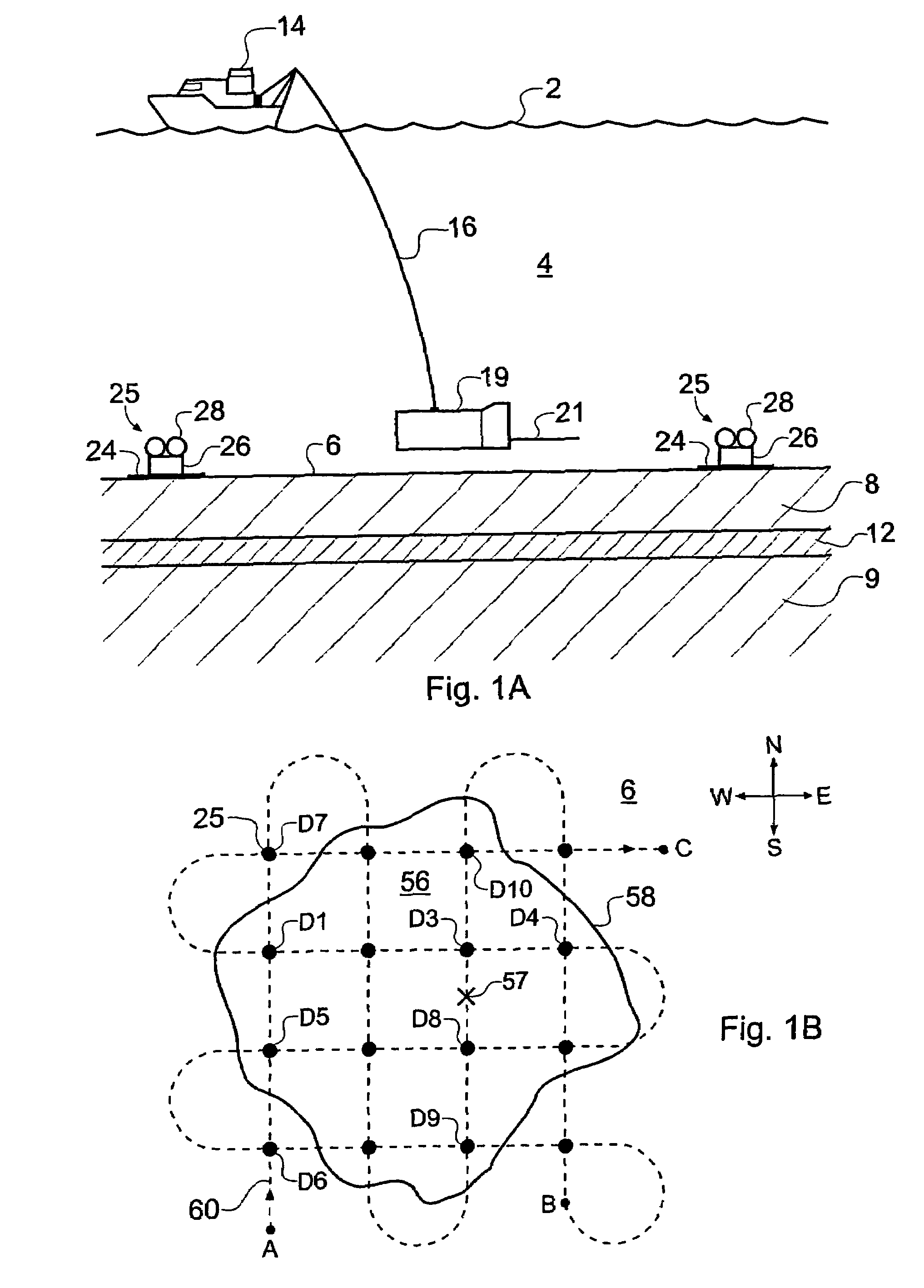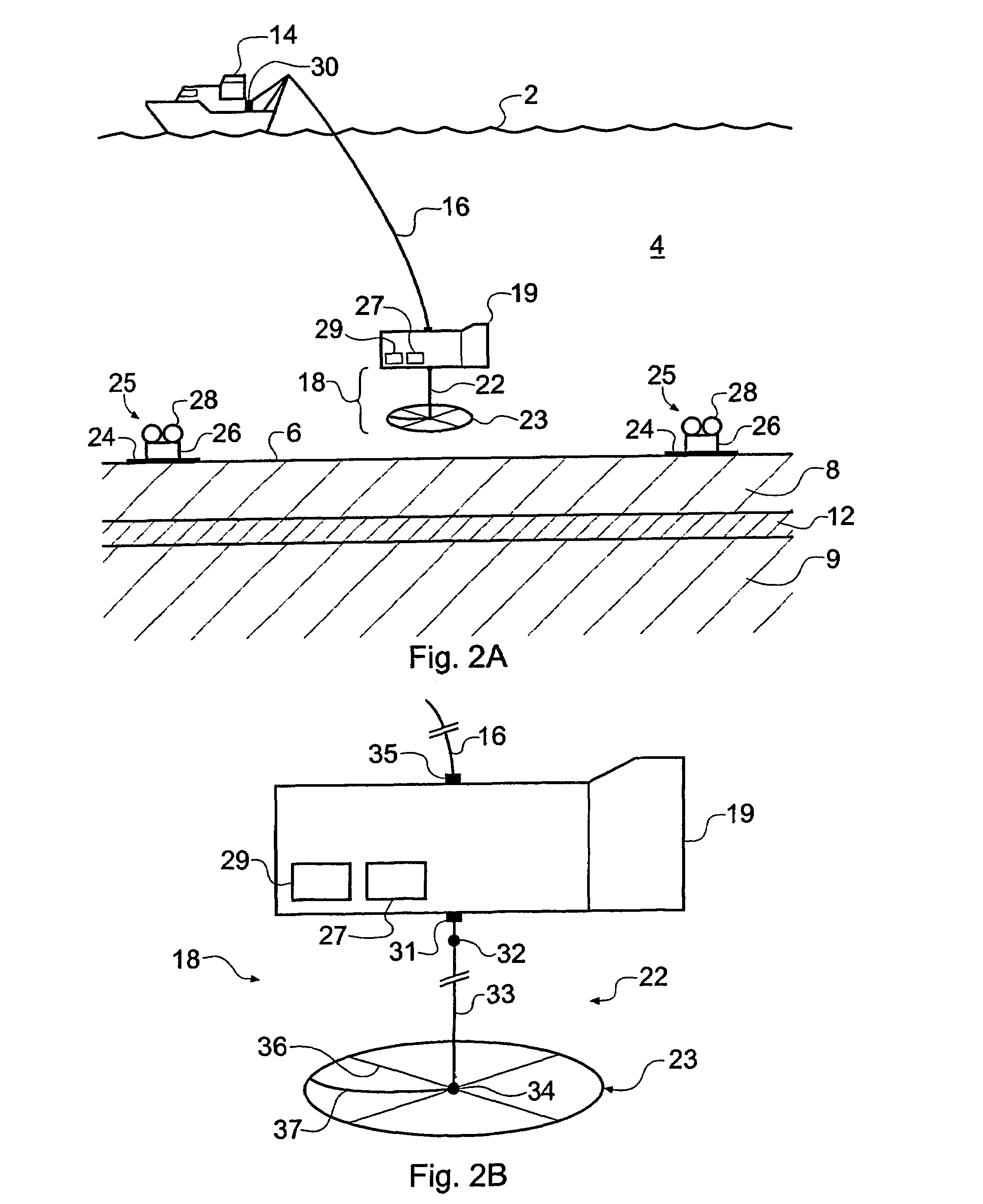Electromagnetic surveying for hydrocarbon reservoirs
a hydrocarbon reservoir and electromagnetic surveying technology, applied in the field of seafloor electromagnetic surveying, can solve the problems of difficult to distinguish between the different possible compositions of pore fluids within, expensive process, and no reward guarantee, and achieve the effect of thorough data analysis
- Summary
- Abstract
- Description
- Claims
- Application Information
AI Technical Summary
Benefits of technology
Problems solved by technology
Method used
Image
Examples
Embodiment Construction
[0077]FIG. 2a of the accompanying drawings schematically shows a surface vessel 14 undertaking EM surveying of a subterranean strata configuration (or rock formation) according to an embodiment of the invention. Features shown in FIG. 2a which are functionally similar to features shown in FIG. 1a are given the same reference numeral but shall be described again for the sake of completeness. The subterranean strata configuration includes an overburden layer 8, an underburden layer 9 and a hydrocarbon layer (or reservoir) 12. The surface vessel 14 floats on the surface 2 of the seawater 4. A deep-towed submersible vehicle 19 carrying an EM source 18 is attached to the surface vessel 14 by an umbilical cable 16 providing a detachable electrical and mechanical connection between the deep-towed submersible vehicle 19 and the surface vessel 14. The deep-towed vehicle 19 includes an echo location package 27 which assists in maintaining the EM source 18 at an appropriate height above the se...
PUM
 Login to View More
Login to View More Abstract
Description
Claims
Application Information
 Login to View More
Login to View More - R&D
- Intellectual Property
- Life Sciences
- Materials
- Tech Scout
- Unparalleled Data Quality
- Higher Quality Content
- 60% Fewer Hallucinations
Browse by: Latest US Patents, China's latest patents, Technical Efficacy Thesaurus, Application Domain, Technology Topic, Popular Technical Reports.
© 2025 PatSnap. All rights reserved.Legal|Privacy policy|Modern Slavery Act Transparency Statement|Sitemap|About US| Contact US: help@patsnap.com



